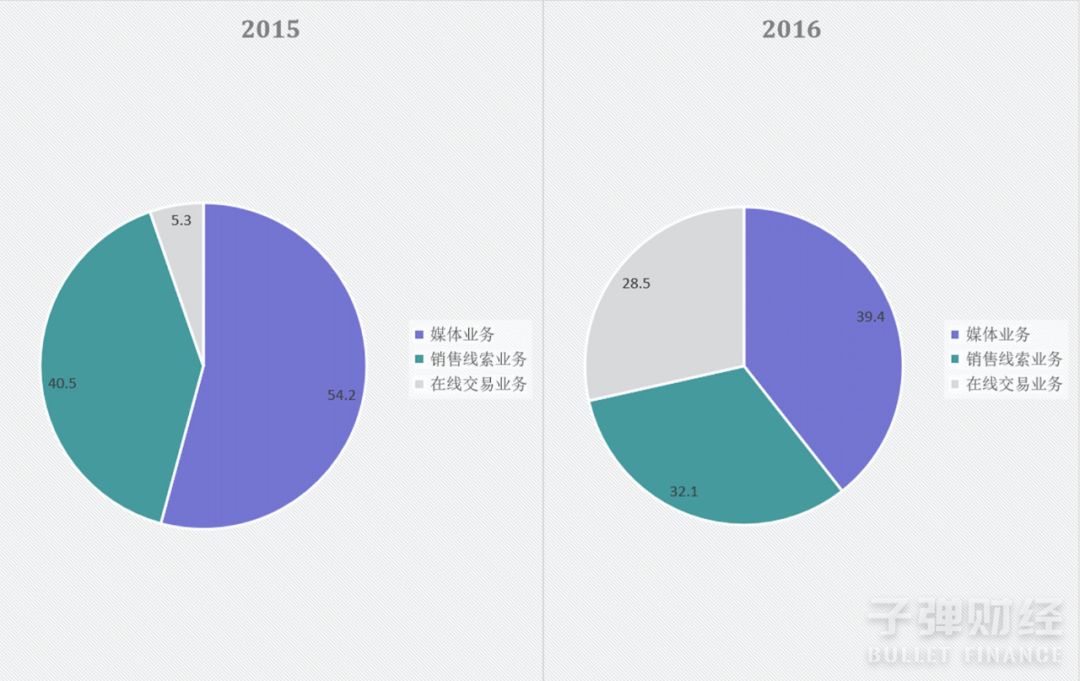Author | Yin Taibai
Editor | Linzhong
1. Industry under winter
The winter of the car market, and ultimately the car home of the car Internet platform has not been able to stand alone.
On November 5th, the Auto House released an unaudited third quarter earnings report for 2019. In general, there are joys and sorrows.
His, even in the context of the 15-year downturn in the car market environment, the performance of the car home is still relatively stable; sadly, the performance of net profit is not satisfactory.
According to the third quarter financial report data, the total revenue of the car home was RMB 2.17 billion, an increase of 14.9% compared with the same period last year of 1.869 billion yuan.
If you don’t do vertical comparisons, just from the current season’s data, the car home’s revenue capacity is indeed remarkable.
On the day of the release of the financial report, Cui Dongshu, secretary-general of the National Passenger Car Market Information Association, said at the industry conference: “The car market is in a very difficult time, and the auto industry has even dragged down China’s economic growth.” p>
This is not an alarmist. Statistics from the National Passenger Vehicle Market Information Association show that in the first three quarters of 2019, 70% of the 78 mainstream car companies experienced sales declines, of which 32 car companies fell more than 30%. The 17 declines even exceeded 50%.
The car companies with amazing declines have basically swept the edge of bankruptcy. For example, Suzuki has withdrawn from the Chinese market since last year.
Although the overall environment of the car market is not optimistic, the revenue of the car home continues the growth of the previous quarter, which is attributed to the net growth of the new business in addition to the net growth of the core business. .

According to the third quarter earnings report, the car home’s revenue is mainly composed of three parts: media advertising, clue sales and online sales and others.
Among them, media advertising is still the main revenue-generating force, reaching 924 million yuan, an increase of 2.50%. This part of the income mainly comes from the increase of advertising quotation and the increase of advertising, especially the increase in advertising investment of used car e-commerce.
Cluster sales are also not to be outdone. Due to the continuous increase in the cost of sales led by dealers, the sales revenue of the car home in the third quarter was 828 million yuan, a year-on-year increase of 12.00%.
The most gratifying trend is the new business online sales. In the third quarter, the online sales revenue of Auto House was 417 million yuan, a substantial increase of 68.2%.
Overall, although the total revenue in the third quarter was slightly lower than the year-on-year growth rate of the previous two quarters (25.14% and 23.55%, respectively), considering the overall situation of the industry, this The results are not easy.
However, compared to the double-digit growth in total revenue, the performance of net profit is not satisfactory.
According to the third quarter financial report data, the car company’s net profit was 640 million yuan, down 5.5% year-on-year, and the chain fell by 19.7%.
This situation has a lot to do with the overall sales of the auto market. In the second quarter of this year, the business data of the car home is still relatively strong, but as the market continues to decline, it will eventually be defeated.
As early as July this year, the China Association of Automobile Manufacturers has adjusted its car sales forecast this year from zero growth to a 5% decline, with passenger cars being adjusted to decline by 5.4%.
HIS Market, UBS and other foreign consulting agencies are also pessimistic about the domestic auto market. These institutions are forecasting a 6% to 8% decline in car sales this year.
The facts are also true. According to the third-quarter earnings report of 26 A-share listed companies in the auto industry, only 9 of them achieved net profit growth year-on-year, while more than 60% of car companies experienced different declines in net profit.
For the car home, although it does not directly produce cars or directly sell cars, as a car Internet platform, the three major businesses are closely related to the development of car companies.
Car sales are notBoom, car companies will also reduce the amount of advertising, and this will inevitably affect the overall financial data performance of the car home.
2. Transformation is still too difficult
The car market is experiencing an unprecedented level of anxiety, and car homes that are parasitic on car companies are inevitably infected.
As early as 2016, the car home’s revenue consisted of only two parts: First, the most basic media advertising, accounting for 54.2%, mainly including car manufacturers advertising services and marketing activities for car brands; another It is the clue sales, accounting for 40.5%, mainly providing sales leads for dealers.
Therefore, getting rid of the reliance on the media advertising business quickly reached a consensus within the car home.

But the road to reliance on dependence is not going well.
Finding a new profitable business means that the car home must first break the vertical media restrictions. How to ensure that the media advertising business continues to grow while taking advantage of the newly developed business on the average share of the former is a difficult problem to be solved by the car home.
In the beginning, the car home will set the direction of the breakout as a car e-commerce.
The internal analysis of the car home believes that moving from vertical media to self-operated e-commerce is a natural road.
As a vertical media for many years in the automotive industry, the accumulated consumption data and mature forecasting capabilities will make the competitiveness of the automotive e-commerce business rapidly increase.
However, the turning point is coming soon.
On April 15, 2016, the original largest shareholder of the Auto House, Australian telecommunications giant Telstra announced that it would sell 47.7% of the shares to Ping An for US$1.6 billion. After 70 days, the transaction was officially concluded.
After more than three months after China Ping An entered the Auto House, Lu Min, Chairman and CEO of Auto House, proposed a “4+1” development strategy based on the existing business and long-term goals.
“4” refers to the creation of “car media, car e-commerce, car finance, car life”Four circles, “1” refers to the transformation from a vertical-based company based on content to a car company based on data technology.
The car home intends to gradually create a closed loop of internal car ecology with clues as the core, media as the auxiliary, and technology as the cornerstone.
But the car home’s self-operated e-commerce road did not finally pass.
A year later, the new management of the car home began to gradually abandon the business of self-operated e-commerce. The reason for the failure to explore is also summed up by the outside world as the car home sells sales leads to dealers, while still rushing to sell cars with dealers.
China Ping An also quickly realized that there are big problems in the planning of the car home. Starting from the fourth quarter of 2016, the car home has transformed into a “light asset-based car internet platform”, no longer plays a seller, but plays a platform role like Taobao.
Abandoning self-operated e-commerce, China Ping An hopes to build a car home into a platform that links stakeholders in the entire industry. This platform includes manufacturers, distributors, automotive industry chain service providers, and financial services. And so on.
The transition from automotive vertical media to data-based Internet car platforms is seen as the most transformative path for car homes.
For an Internet company, the most important value is to accurately grasp the user data, and rely on Internet technology to further dig deep into the data and transform to the data company, and provide personalized services for different needs of users.
According to this idea, build a platform to build a car ecosystem, which is convenient for users to choose a car to buy a car, so that the stakeholders in the interest chain can better develop their business, and the car home only needs to be in this interest chain. It can be used as a cohesive role.
However, reality always runs counter to ideals. The car home does not seem to be transformed into a real car Internet platform.
According to the second quarter to fourth quarter financial report data of 2017, the proportion of online sales of new businesses that lead the transformation is no more than 10%. That is to say, the revenue of the entire 2017 home is still based on Media advertising and clue sales are the mainstay.
After 2018, the profit structure of the car home was transformed from advertising and clues to advertising, clues, data, and finance. The latter two were consolidated into online sales and other income in the financial report. In the second quarter of 2018, online sales revenue reached 198.7 million yuan, accounting for more than 10% for the first time. Even to 2019In the third quarter of the year, the proportion of online sales to total revenue was only 19.2%.
This means that although the car home claims to have been transformed into a car Internet platform, its revenue structure has not changed much, and the revenue generated by media-related businesses still accounts for more than 80% of total revenue. .
3. The invasion of the competition
The car market environment is weak, and the car home has also exposed hidden concerns. Mainly reflected in two aspects.
On the one hand, it is the rising cost of the car home. According to the third quarter financial report data, its sales cost was 1.426 billion yuan, up 32.8% year-on-year, and in the second quarter, this figure was only 893 million yuan.
On the other hand, there are many automotive vertical media platforms emerging in the automotive industry, which are attacking the territory of the car home.

For example, know the car emperor. Relying on the flow support of today’s headlines, vibrato and other byte-based products, I understand that the car has made great progress in content construction. In the core logic of the product, knowing the car emperor also followed the most advantageous artificial intelligence algorithms and big data advantages of today’s headlines.
According to the previously published data, the number of users of the Emperor’s Day is 4 million, and the average number of users open every day is 4, and the daily usage time is 24 minutes. Although there is still a certain gap with the car home, it is already a threat that cannot be ignored.
The same car as the US-listed company is also catching up.
In fact, whether it is online time or time to market, the car is ahead of the car home. Although the volume is not as good as the car home, the operating data of the car in the last two quarters has achieved good performance.
According to the second quarter financial report data of Easy Car, the total revenue of Easy Car was RMB 2.792 billion, an increase of 8.9% year-on-year, of which the automobile transaction service business (roughly the same as the clue sales and online sales of the car home) ) Revenue reached 1.49 billion yuan, an increase of 1 year-on-year7.2%, the transaction volume increased by 34%.
It should not be overlooked that in addition to the deep industry accumulation, there are resources and financial support from major shareholders such as Jingdong and Tencent.
For the car home, the importance of traffic is self-evident, which is also an important reference factor for it to attract car companies to advertise.
According to the third-quarter earnings report, the number of active users of the homepage of mobile homes, mobile apps and applets reached 38.8 million, an increase of 38% from September 2018.
But with the acceleration of the commercialization of the car home, its content is inevitably affected. This is mainly because the major auto e-commerce platforms continue to advertise, resulting in a dramatic increase in advertising content, and the user experience is seriously declining.
The media-related business revenue accounts for more than 80% of total revenue, which is enough to prove that the car home is too dependent on it. However, in order to control the delivery of advertisements for the user experience, it is bound to seriously affect the performance of revenue data.
Undoubtedly, the car home still plays a pivotal role in the field of vertical media. However, under the current market conditions, the stock market is constantly shrinking, and competition is inevitable.
Returning to the essence of the content or continuing to realize the content, this is indeed a difficult scale.
If there is no more barrier-packed business moat to increase its commercial value, will the spring of the car home come?
Central distribution map from: piqsels, based on CC0 protocol